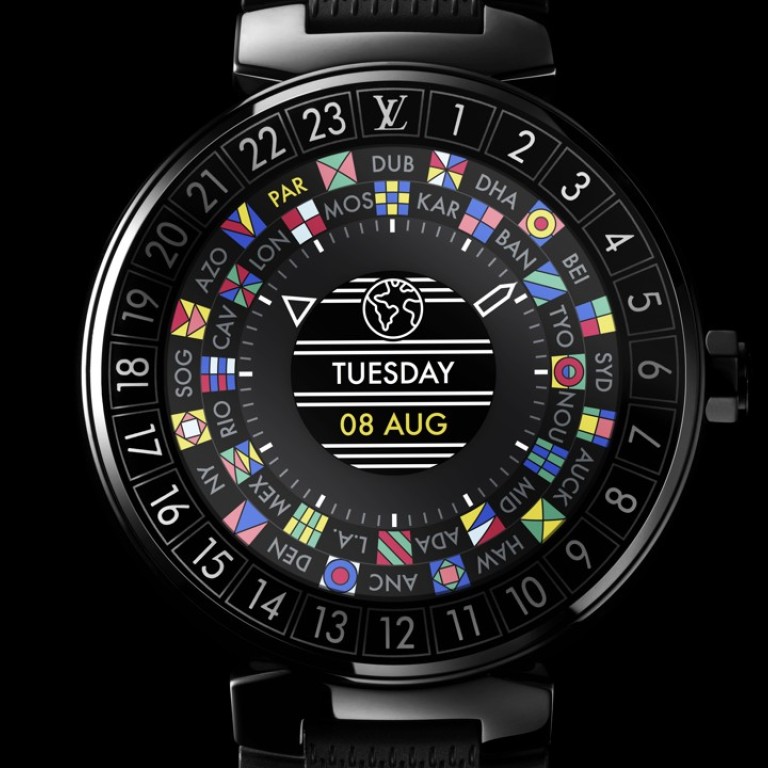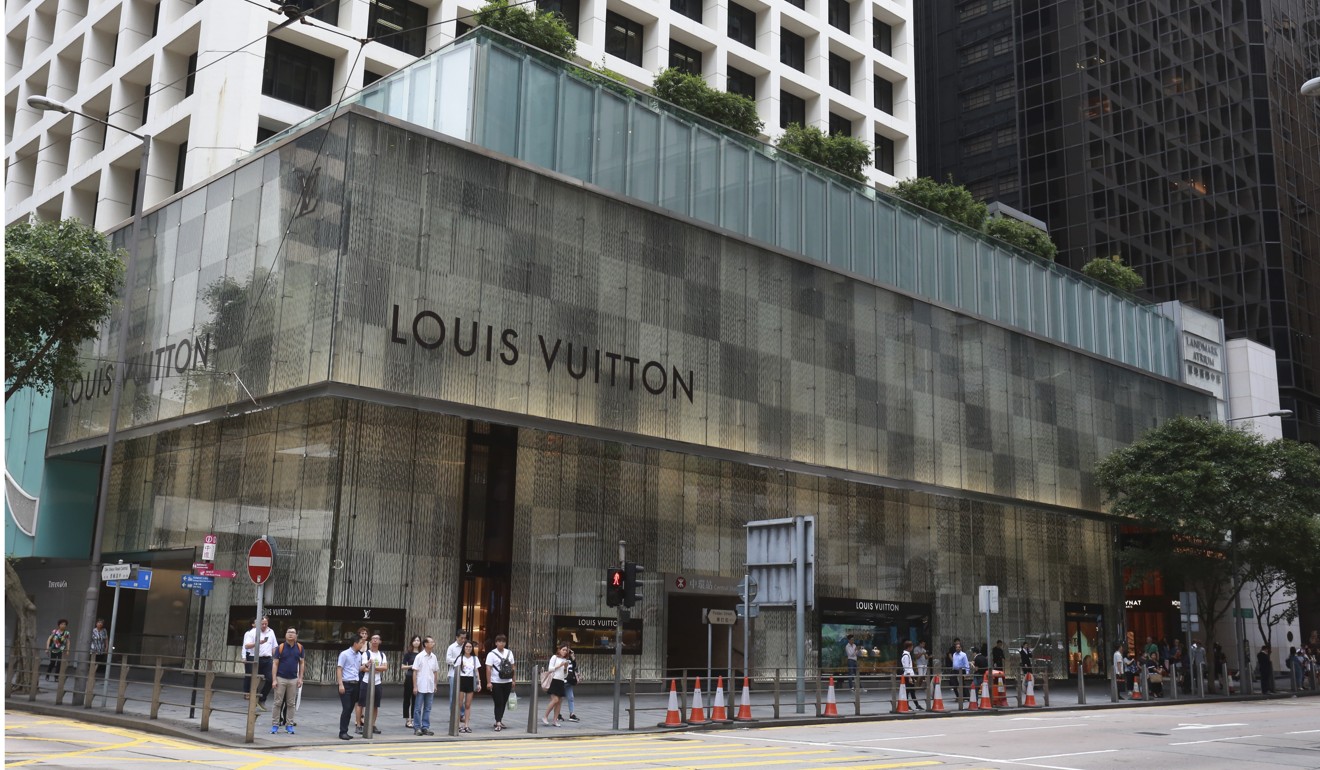
Exclusive | Louis Vuitton reveals Tambour Horizon smartwatch and VP Hamdi Chatti explains LV’s jump into wearable tech
Combining luxury and beauty with unique technological features, the Tambour Horizon was created in partnership with Google and Qualcomm – and could be just the first in a whole suite of LV tech-focused products
Just over a year ago, Louis Vuitton launched the Tambour Moon Flying Tourbillon “Poincon de Genève”. The watch was the company’s first to bear the prestigious, and hard-to-attain, Geneva Seal – a confident statement that its watch division had finally reached the apex of fine watchmaking.
Fast forward to the present day and the French luxury house has surprised once again with its latest launch – but for very different reasons. Today, Louis Vuitton revealed its first smartwatch, the Tambour Horizon, in an elaborate and coordinated global launch. While it bears all the technology and functions consumers have come to expect of smartwatches, the Tambour Horizon is also unmistakably a Louis Vuitton product, deviating from its competitors in both its look and user experience.
“It’s something that is pretty new on the market and at the same time very interesting,” says Hamdi Chatti, vice-president of watches and jewellery at LV.

“New” in the watch industry is a loosely used word, but the Tambour Horizon does claim a number of innovations, notably that the 42mm dial is the smallest of any luxury smartwatch. It’s also the first Android Wear smartwatch that functions in China.
Speaking exclusively to SCMP.comfrom Paris, Chatti says the watch was a two-year project that began with strict principles. “It had to be about luxury and beauty – that was the starting point of this project.”
Three of the best smartwatches to help you stay connected
Louis Vuitton partnered with US tech giants Google and Qualcomm in developing the Tambour Horizon, with the watch utilising the former’s Android Wear operating system and the latter’s microchips. “When we met with the Qualcomm and Google people in California, we wanted to make sure it looked like a luxury watch first,” Chatti says, adding that the technology had to fit around those tight stipulations.
The luxury look and feel comes from leather straps boasting the LV stripe, monogram and checkerboard pattern, as well as a completely tailored operating system (another first) with built-in features such as the company’s famed travel guides. Only available in one size, the Tambour Horizon comes in three variations: polished, satin-finished and all black.

Louis Vuitton is not the first luxury watchmaker to produce a smartwatch; that title belongs to one of its sister companies within the LVMH empire, Tag Heuer. At the peak of its recent restructuring, Tag Heuer launched its Connected Watch in late 2015 to much scepticism. This was particularly the case in Switzerland, where the prevailing belief was that either consumers would not be willing to pay a premium for luxury branded smartwatches, or that they could not effectively compete with Apple and Samsung.
The opposite turned out to be true, and in January this year the company’s vindicated CEO, Jean-Claude Biver, told the Swiss newspaper Neue Zürcher Zeitung that it had shifted 56,000 of the smartwatches – three times the number it had expected. Sales were so good that Tag Heuer upped its forecast for this year, with a target of 150,000 units.
Seven of the best travel watches for Hong Kong globetrotters
Noting this success, other brands are following suit. Montblanc, for example, was the first of the Richemont stable of luxury watch brands to launch a smartwatch, releasing the Summit earlier this year.
Without doubt, the market and the consumer are shifting towards more technology-driven pieces, and the entry of an industry bellwether in Louis Vuitton should accelerate the trend.
“We believe that this is the future, this new functionality, and we wanted to be part of that. But we wanted to do it in a different way,” says Chatti of LV’s motivations for creating a smartwatch. “New technology [in smartwatches] is important and our clients will have it, going forward. As the biggest luxury company in the world, we needed to bring savoir faire to that technology [and] make that technology beautiful.”
Louis Vuitton CEO Michael Burke is more emphatic when explaining why the company is moving into wearable technology. “We don’t know where the industry of connected objects is going. But we know it’s going to be massive. We have to participate and there are two ways of going at it. You can either sit on the sidelines and observe, or you can dive in and be an actor.”

The challenge for luxury smartwatches so far has been pricing, as these pieces do away with the elaborately finished mechanical movements and complications that have, until now, justified the exorbitant prices. Adding further pressure is the pricing of premium tech brands such as Apple, whose higher-end smartwatches start in the HK$5,000 range (the company also sells a Hermès-branded special edition for up to HK$12,088).
Whatever we do, we go to the best place in the world [to make it] … For connected watches, the best technology is in California, not in Switzerland
In the luxury market, Tag Heuer prices most of its smartwatches in the HK$12,000 to HK$19,000 price range; Montblanc, meanwhile, took a drastically different approach with pieces priced as low as HK$6,800. LV has priced the Tambour Horizon at HK$20,000, rising to HK$23,500 for special materials, placing it at the top of the market.
“It’s [priced] at the top level. Absolutely, it had to be at the top level. There’s no compromise,” says Chatti as he reiterates the luxury qualities and the unique characteristics of the Tambour Horizon.
Swiss smartwatches multiply as makers hunt millennial buyers
Outwardly, the smartwatch has a familiar look and feel to other LV watches. It uses the distinctively round Tambour case of the company’s most famous timepiece and the one which launched the watch division in 2002. Chatti says rather than create a new family or sub-line of watches, the Tambour design was the “obvious” choice.
The introduction of a smartwatch is inevitably going to raise questions about the future strategy for LV’s watch department, particularly as the Tambour Horizon is the polar opposite of last year’s critically acclaimed, yet very traditional, Tambour Moon. Chatti says the team behind the Tambour Moon was also behind the design of the Tambour Horizon, and the scope of their work has had to adapt to new realities.
“They need to make sure they have the most beautiful Geneva Seal watch as well as the most beautiful connected watch,” Chatti says, adding that beyond this dual-track strategy, nothing will change within the fine watchmaking division.
The Apple Watch turned two, but there might not be a lot to celebrate
While it was the same team in Switzerland working on the watch, a sizeable portion of the development and the final assembly for the Tambour Horizon was done in the US – a notion that may seem at odds with the robustly defended “Swiss Made” stamp that can add zeros to a watch’s price tag.
“I think it’s the only [such] watch on the market that has been assembled in California,” Chatti says. “Whatever we do, we go to the best place in the world [to make it]. For the shoes we went to Italy, for the watches we went to Switzerland and we will remain there. For connected watches, the best technology is in California, not in Switzerland, so it’s assembled in California – but the strap and all the other parts come from Switzerland.”
Chatti adds that Louis Vuitton is developing other tech-focused products and he envisions a future where a whole suite of luxury goods could be controlled from the smartwatch. But any future wearable tech will only happen “when the technology is ready and it makes sense for our clients”.
Three watches that hide ‘smart’ credentials up their sleeve
Burke is more explicit, noting that the Horizon name is also used in its luggage collection. “If the luggage is called Horizon, it probably means … it will be connected. All connected objects will have the moniker Horizon. That’s the signature.”

